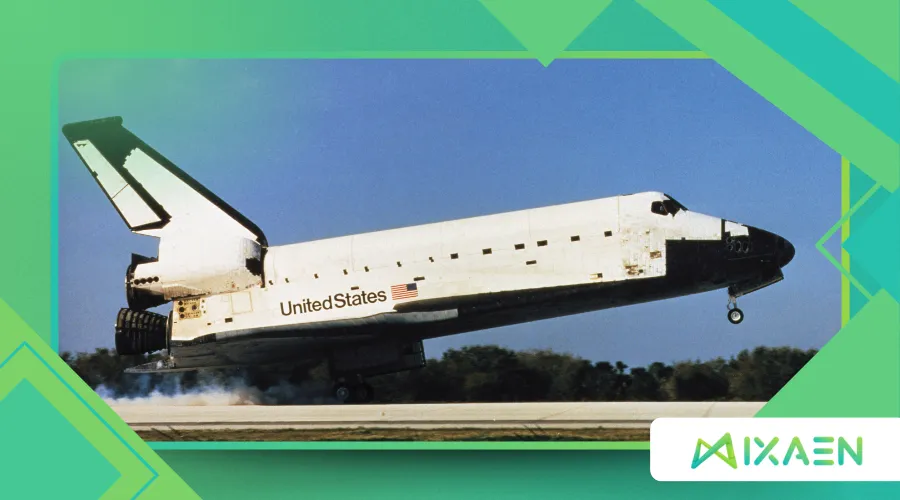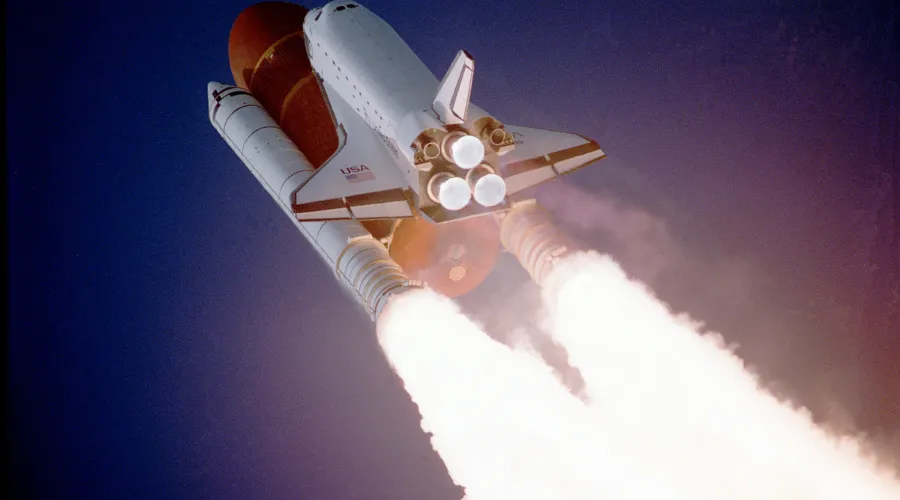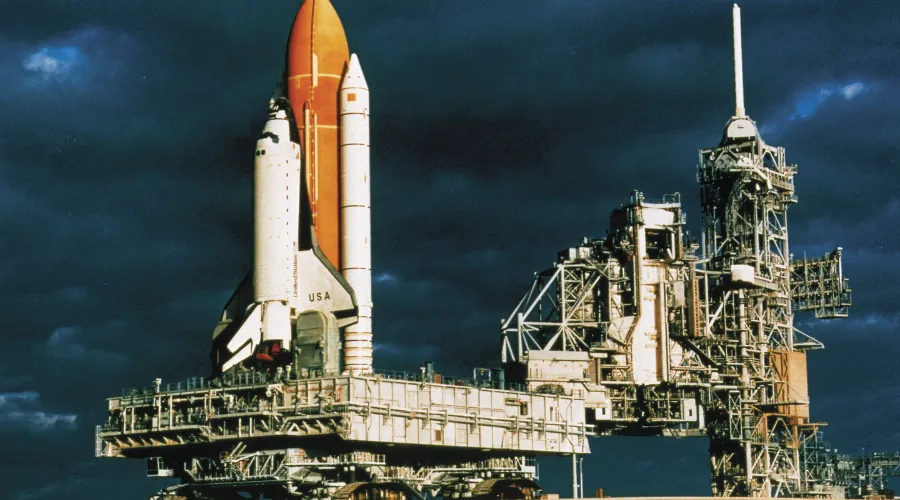Space Shuttle Columbia: The Mistake That Cost Seven Lives

The space shuttle Columbia disaster remains one of the most tragic chapters in NASA’s history, a stark reminder of how overlooked risks can lead to catastrophic consequences.
Anúncios
On February 1, 2003, the orbiter disintegrated upon re-entry, claiming the lives of seven astronauts.
What went wrong? A piece of foam insulation, no larger than a briefcase, struck the shuttle’s left wing during launch, compromising its thermal protection system.
The result? A preventable tragedy that exposed systemic failures in risk assessment and communication.
The loss of Columbia not only devastated the families of the astronauts but also shook the entire space community.
In the wake of the disaster, NASA faced intense scrutiny from the public and government officials, leading to a reevaluation of its operational practices.
This tragic event highlighted the importance of transparency and accountability in organizations responsible for human safety.
Furthermore, the Columbia disaster prompted a broader discussion about the ethics of risk management in high-stakes environments, emphasizing that safety should always take precedence over operational deadlines.
As a result, it catalyzed changes not only within NASA but also across various sectors that deal with human safety, reinforcing the idea that every warning should be taken seriously.
The Illusion of Invincibility
NASA’s shuttle program had long been celebrated for its triumphs, but success bred complacency.
Foam strikes had occurred in previous missions, yet engineers dismissed them as minor issues—a classic case of normalizing deviance.
The space shuttle Columbia was no exception; when footage revealed the impact, concerns were raised but ultimately downplayed.
This attitude fostered a culture where risks were underestimated, leading to a false sense of security.
As the program continued, the belief that the shuttle was invulnerable became ingrained in the organization’s psyche.
This overconfidence ignored the reality that every mission carried inherent risks that needed to be addressed, not brushed aside.
The perception of invincibility also affected decision-making processes, as stakeholders believed that past successes guaranteed future safety.
In this environment, critical warnings were often overlooked, contributing to a cycle of negligence that would culminate in disaster.
Moreover, the normalization of risk led to a lack of thorough investigation into previous incidents, creating a dangerous precedent where lessons from the past were not applied to future missions.
This cycle of complacency ultimately set the stage for the catastrophic events that unfolded during Columbia’s final mission.
Example: Imagine driving a car with a cracked windshield.
Every day, the crack grows, but since the car still runs, you ignore it—until the glass shatters.
That was NASA’s mindset.
+ The Impact of the Voyager Probes on Modern Space Exploration
The Fatal Flaw: A Culture of Overconfidence
Investigations revealed a chilling truth: NASA’s organizational culture prioritized schedules over safety.
The Columbia Accident Investigation Board (CAIB) found that managers dismissed engineers’ requests for additional imaging of the damage, assuming the shuttle could withstand re-entry.
This mindset led to a critical failure in judgment that would have devastating consequences.
The CAIB report highlighted how previous incidents had created a dangerous precedent, where engineers felt their concerns would not be taken seriously.
Statistic: According to the CAIB report, foam debris had struck shuttles in 67 out of 79 previous missions—yet no corrective action was taken.
This negligence demonstrated a systemic issue within NASA, where past experiences failed to inform future decisions.
Moreover, the investigation pointed out that there was a lack of effective communication channels between engineering teams and management.
This disconnect further exacerbated the issue, as critical information about potential risks was not adequately conveyed to those in decision-making positions.
The culture of overconfidence also discouraged engineers from voicing dissenting opinions, creating an environment where safety concerns were routinely sidelined.
As a result, the organization became trapped in a cycle of denial, believing that their technology was infallible and ignoring the very real risks associated with each launch.

Table 1: Key Failures Leading to the Disaster
| Failure | Consequence |
|---|---|
| Foam strike ignored | Compromised thermal protection system |
| No in-orbit inspection | Undetected wing damage |
| Poor risk communication | Lack of contingency planning |
Could the Crew Have Been Saved?
The CAIB concluded that a rescue mission might have been possible.
Had NASA acknowledged the damage, the astronauts could have taken refuge in the International Space Station (ISS) while another shuttle was prepared.
But hesitation and flawed judgment sealed their fate.
This realization added another layer of tragedy to the incident, as it became clear that the crew’s lives could have been saved with timely action.
The investigation emphasized that effective communication and decision-making could have altered the outcome significantly.
Had there been a culture that encouraged questioning and a thorough evaluation of risks, the outcome might have been different.
Additionally, the emotional toll on the families of the astronauts was profound, as they grappled with the loss and the knowledge that it could have been prevented.
This tragedy also raised questions about the psychological impact on the surviving crew members and their families, who were left to deal with the aftermath of the disaster.
The potential for a rescue mission highlighted the importance of contingency planning in space exploration, a lesson that would resonate in future missions.
Analogy: It’s like a surgeon ignoring a patient’s critical symptoms—by the time they act, it’s too late.
Such comparisons highlight the importance of vigilance and responsiveness in high-stakes environments.

++ Buran, the Soviet Space Shuttle: History, Curiosities, and the Fall of a Giant
Lessons Learned Too Late
The disaster forced NASA to overhaul its safety protocols.
Shuttle missions resumed only after rigorous inspections and a renewed focus on risk management.
Yet, the price of these lessons was unbearably high.
In the aftermath, NASA recognized the need for a cultural shift, emphasizing the importance of safety over schedules.
Training programs were revamped to ensure that all personnel understood their roles in maintaining safety standards.
Additionally, the agency committed to fostering an environment where concerns could be raised without fear of dismissal.
The reforms also included establishing independent safety review boards to provide unbiased assessments of mission readiness.
This change aimed to break down the bureaucratic barriers that had previously stifled open dialogue about safety concerns.
Moreover, NASA implemented regular safety drills and simulations to prepare teams for potential emergencies, reinforcing the importance of readiness in crisis situations.
These changes not only improved safety protocols but also helped to rebuild trust between engineers and management, fostering a more collaborative work environment.
Table 2: Changes Implemented Post-Columbia
| Reform | Impact |
|---|---|
| Mandatory debris inspections | Early detection of damage |
| Emergency repair kits | On-orbit fixes for minor issues |
| Independent safety reviews | Reduced bureaucratic complacency |
For further reading on the implications of the Columbia disaster, you can visit NASA’s official investigation report.
A Legacy of Remembrance
The space shuttle Columbia tragedy wasn’t just about engineering failures—it was a human failure.
Seven lives were lost because warning signs were ignored.
As we push further into space exploration, the lessons of Columbia must never fade.
The impact of this disaster extended beyond NASA, prompting discussions about safety practices across various industries.
Organizations began to reevaluate their own procedures, ensuring that lessons learned from Columbia would not be forgotten.
This tragedy also served as a catalyst for increased funding and support for safety initiatives within NASA and other space agencies.
The legacy of Columbia has inspired a new generation of engineers and scientists to prioritize safety and ethics in their work.
In educational institutions, the disaster is often studied as a case of what can go wrong when safety is compromised, ensuring that future professionals learn from the mistakes of the past.
Final Thought: How many more warnings will we overlook before history repeats itself?
This disaster reshaped NASA, but at what cost?
The space shuttle Columbia serves as a somber lesson—one that demands vigilance, humility, and an unwavering commitment to safety.
